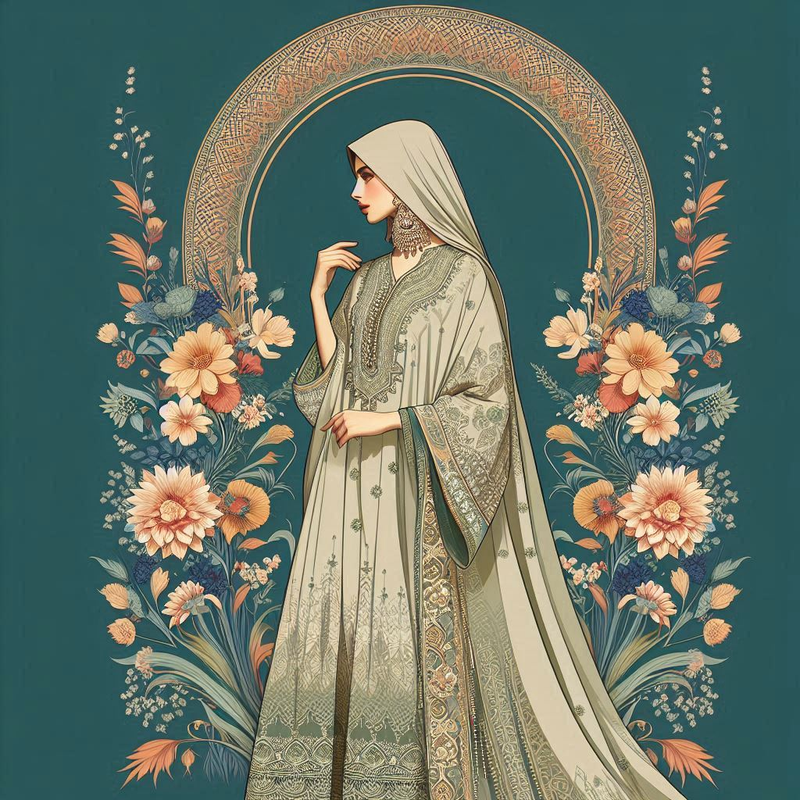Chikankari Embroidery From Pakistan
Chikankari Embroidery form Pakistan - An introduction
Chikankari embroidery from Pakistan is a traditional and exquisite form of hand embroidery that originates from the Indian subcontinent, with a significant presence in Pakistan. This intricate art involves a variety of stitching techniques to create elaborate patterns and designs on fabric, celebrated for its elegance and fine craftsmanship. Known for its delicate and detailed work, Chikankari has a rich historical and cultural significance.
 |
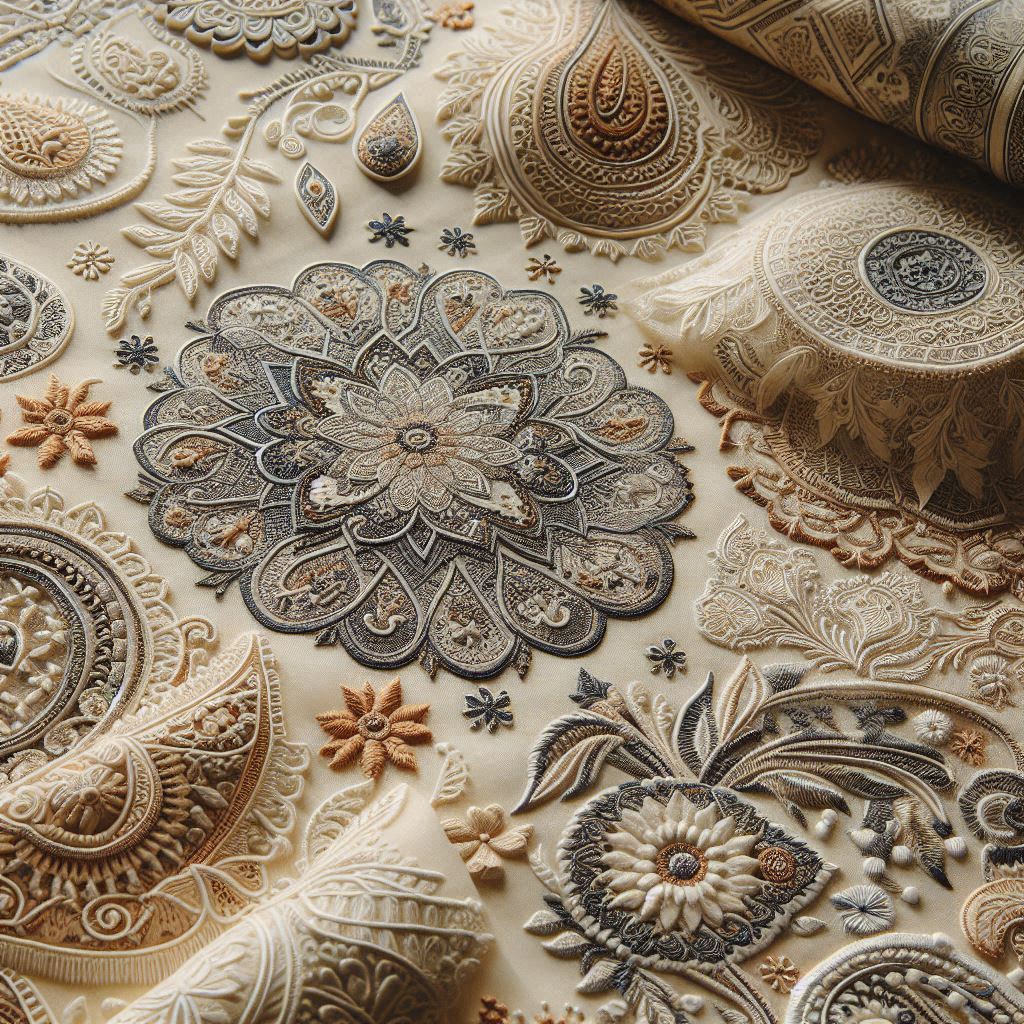 |
Chikankari Embroidery form Pakistan - History and Origins
The history of Chikankari embroidery is believed to date back to the Mughal era, introduced by Nur Jahan, the wife of Emperor Jahangir, in the 16th century. Over centuries, this embroidery style evolved, particularly flourishing in regions like Lucknow in India and various parts of Pakistan, including Karachi, Lahore, and Multan. Chikankari embroidery became a symbol of sophistication and finesse, with traditional Chikankari patterns adorning garments for nobility and royalty.
Chikankari Embroidery - Fabrics Used
Chikankari embroidery can be done on a wide range of fabrics, each providing a unique texture and look to the finished product:
- Chikankari on Cotton: Ideal for everyday wear, providing a breathable and comfortable base.
- Chikankari on Silk: Used for more formal and luxurious pieces, adding a rich texture and sheen.
- Chikankari on Muslin: Known for its lightweight and sheer quality, making it a traditional choice.
- Chikankari on Georgette: Often used for sarees and suits, offering a soft and flowing quality.
- Chikankari on Chiffon: Lightweight and perfect for elegant garments.
- Chikankari on Organza: Used for structured and formal wear, adding a unique dimension to the embroidery.
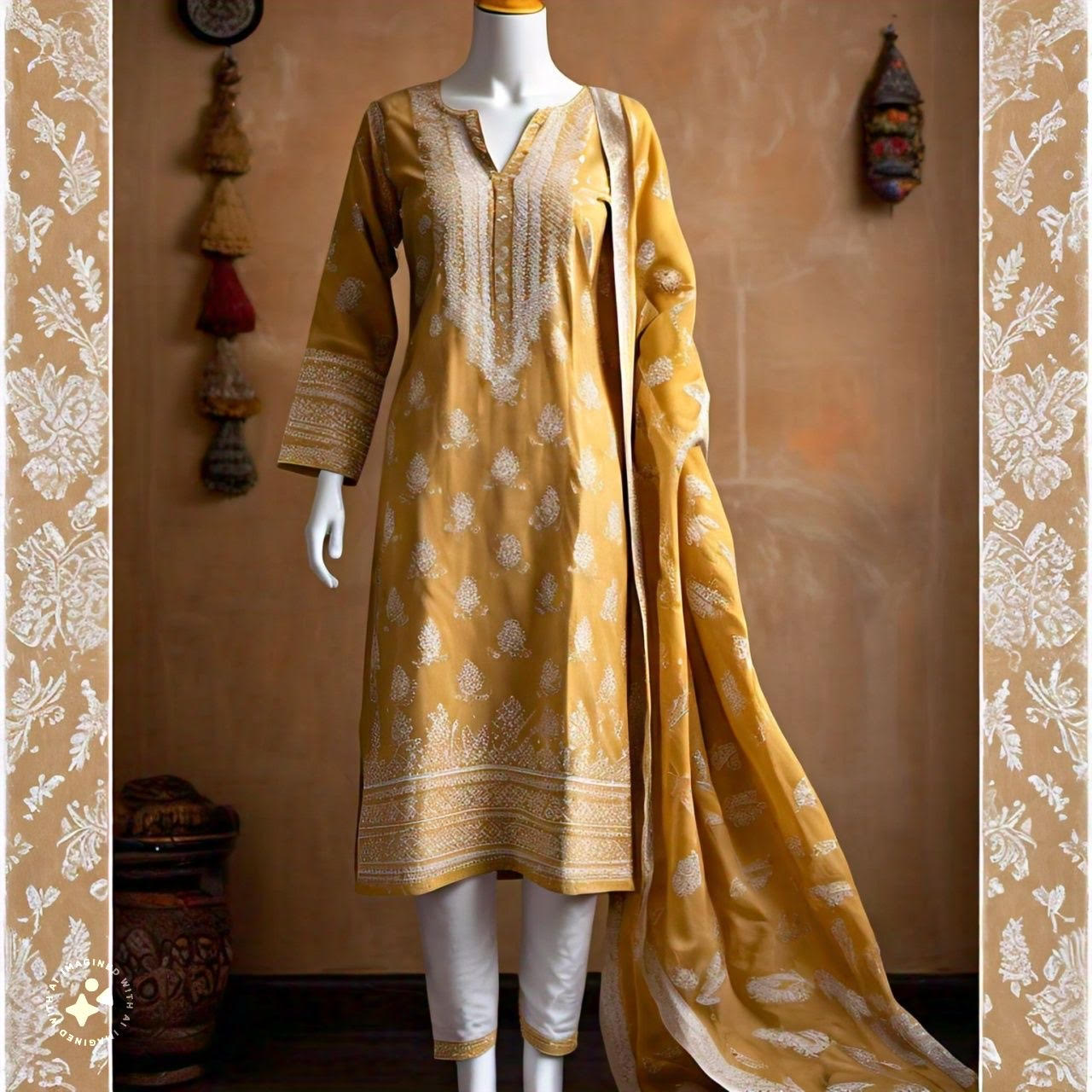 |
 |
 |
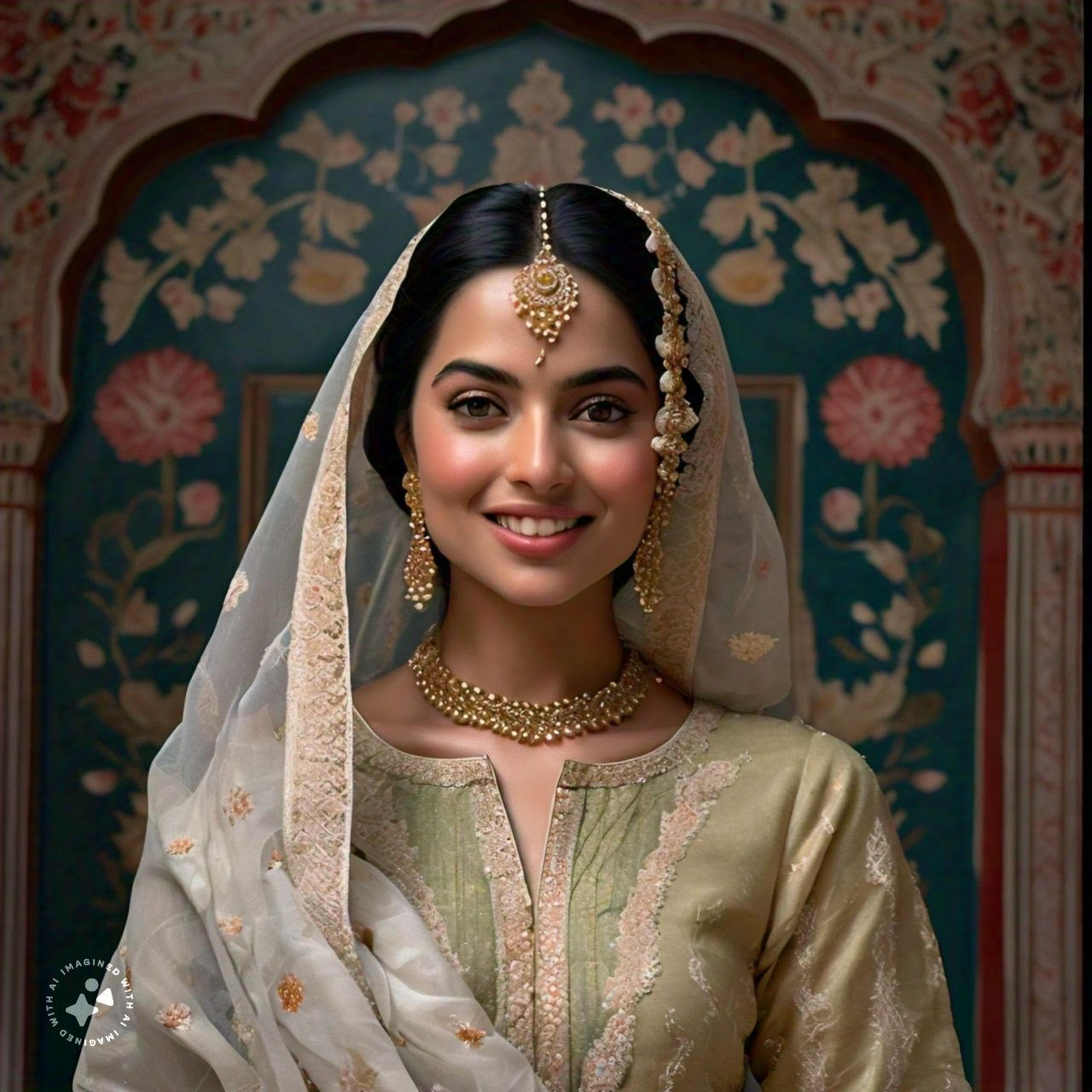 |
Chikankari Embroidery - Techniques and Patterns in Chikankari
Chikankari employs a variety of stitches to create its signature patterns:
- Tepchi (Running Stitch): Used for outlines and borders.
- Bakhiya (Shadow Work): Creates a shadow effect by working the stitch on the reverse side.
- Phanda (Knot Stitch): Small knot-like stitches that create a raised effect.
- Murri (Grain Stitch): Similar to phanda but smaller and more delicate.
- Jali Work: A lace-like effect created by carefully removing threads from the fabric and then embroidering around the holes.
- Hool (Eyelet): A small hole made in the fabric and then embroidered around, creating a tiny floral motif.
- Keel Kangan: A twisted stitch that forms a ring-like pattern.
Chikankari Embroidery - Design Motifs and Patterns
Chikankari designs are typically floral and nature-inspired, featuring:
- Floral Patterns: Roses, jasmine, marigold, and lotus are common motifs.
- Paisleys: A popular motif in South Asian textiles.
- Geometric Patterns: Used in combination with floral designs for added complexity.
- Buti and Buta: Small, individual floral motifs scattered across the fabric.
 |
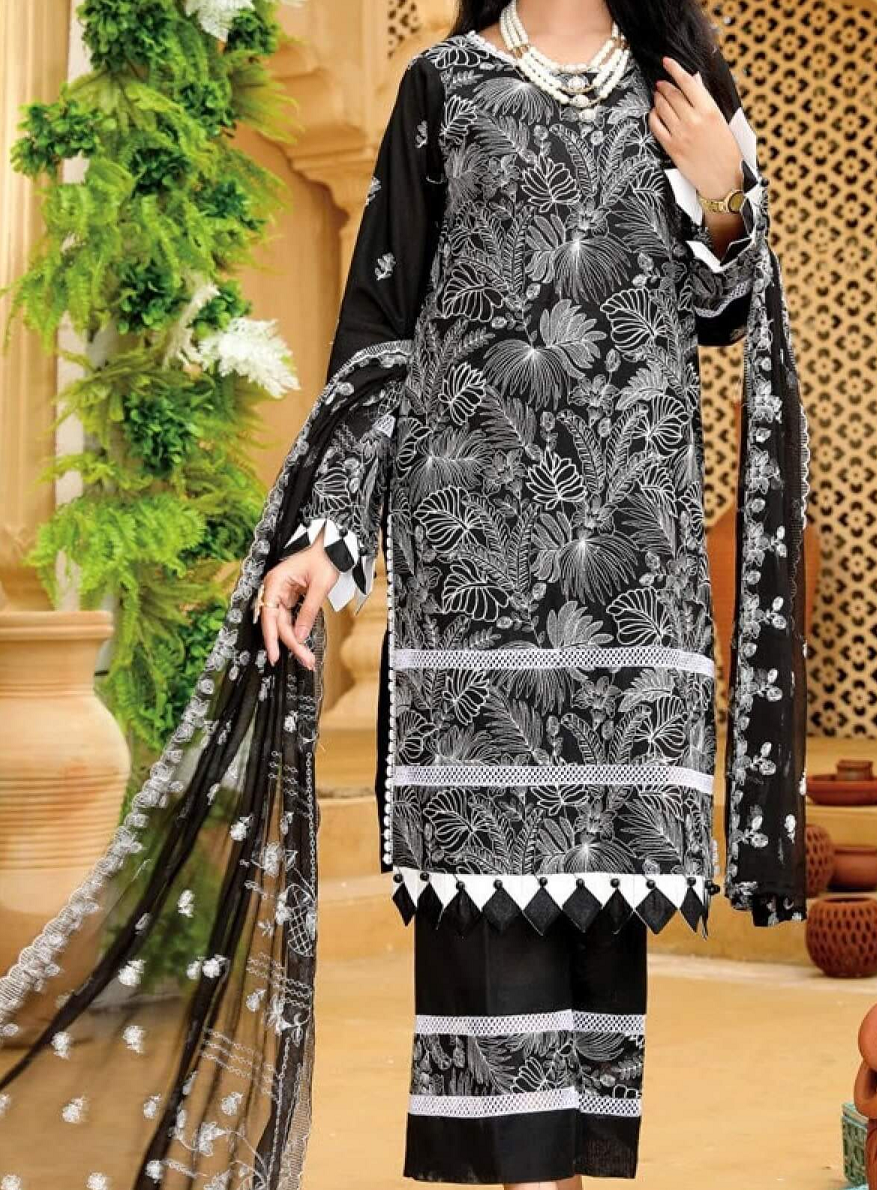 |
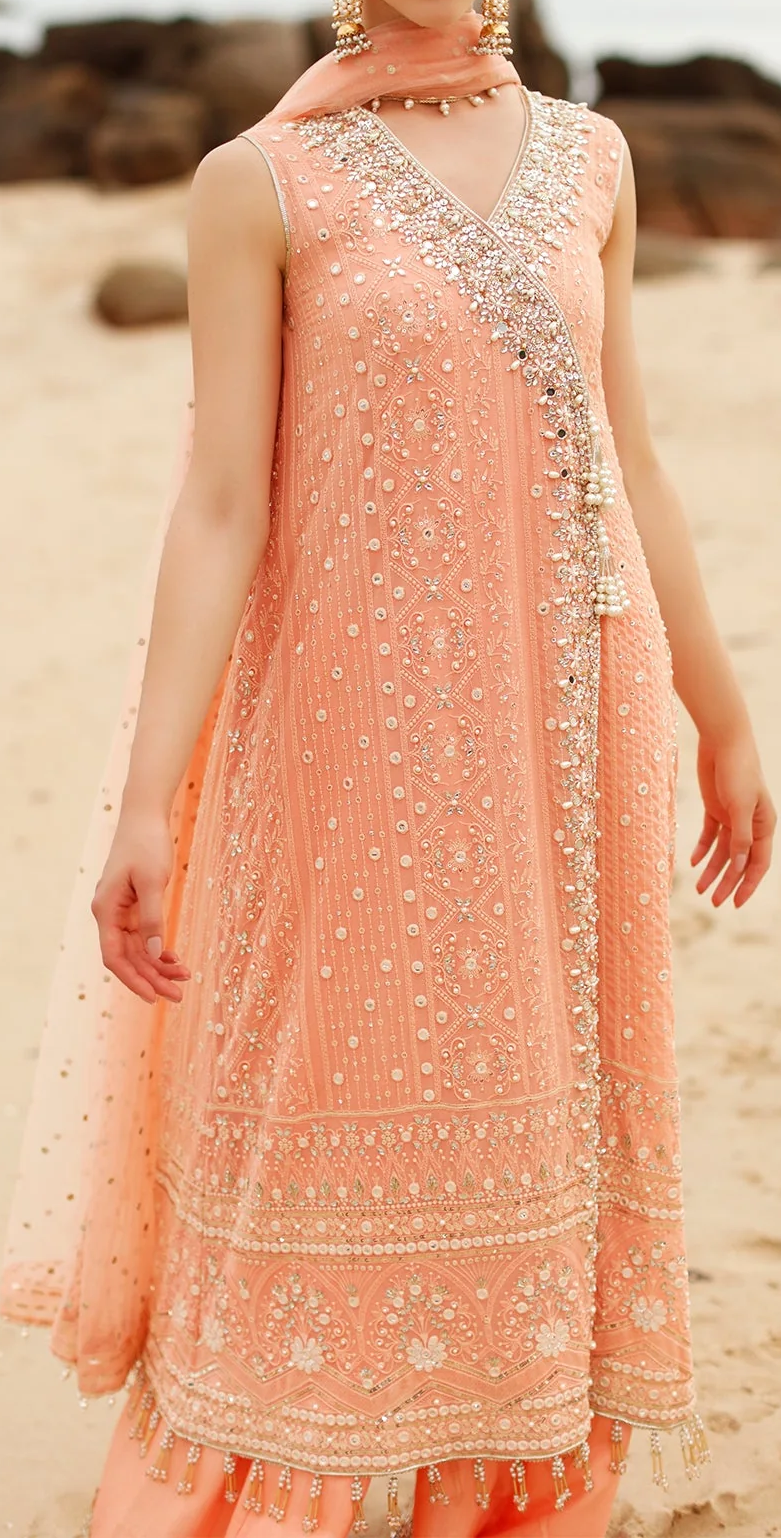 |
 |
Chikankari Embroidery- Modern Adaptations and Uses
While Chikankari traditionally adorned sarees, dupattas, and kurtas, modern adaptations have seen it applied to a variety of garments and accessories, including:
- Chikankari Dresses: Elegant and perfect for various occasions.
- Chikankari Kurtas: Ideal for both casual and formal wear.
- Chikankari Sarees: A timeless piece in any wardrobe.
- Chikankari Suits: Combining tradition with contemporary styles.
- Chikankari Lehengas: Perfect for weddings and festive occasions.
- Chikankari Anarkalis: Offering a regal and classic look.
- Chikankari Tops: A blend of traditional and modern fashion.
- Home Decor: Cushion covers, tablecloths, and bed linens.
- Accessories: Scarves, handbags, and stoles.
Chikankari Embroidery - Cultural and Economic Significance
Chikankari embroidery is more than just an embroidery technique; it is a cultural heritage that supports thousands of artisans, particularly women, in Pakistan and India. The craft is often passed down through generations, preserving traditional methods while also adapting to contemporary trends. The production of Chikankari embroidery provides a source of livelihood for many and helps sustain the rich cultural legacy of this art form
Chikankari Embroidery - Maintenance and Care
Chikankari garments require special care to maintain their delicate embroidery:
- Hand Wash: Use mild detergents and cold water.
- Avoid Direct Sunlight: Dry in shade to prevent color fading.
- Iron on Reverse: To protect the embroidery from heat damage.
Pakistani Chikankari is renowned for its exceptional quality and beauty, and is highly sought after both domestically and internationally. The craft has been passed down through generations of skilled artisans, who dedicate themselves to preserving this traditional art form.
Some notable aspects of Pakistani Chikankari include:
- Exquisite white-on-white embroidery
- Intricate designs and patterns
- Use of high-quality fabrics and threads
- Traditional motifs, such as flowers, leaves, and vines
- Hand-embroidered with precision and care
Chikankari in Pakistan is not only a beautiful art form but also a significant part of the country's cultural identity and heritage. Chikankari embroidery from Pakistan remains a timeless and exquisite form of embroidery, celebrated for its intricate designs and cultural richness. Whether incorporated into traditional attire like Chikankari sarees and kurtas or modern fashion such as Chikankari dresses and tops, this art form continues to enchant and inspire. Representing a beautiful blend of history, art, and craftsmanship, Chikankari is a testament to the enduring legacy of handmade embroidery in the subcontinent.
- Home ›
- Products and Trades ›
- Pakistani Apparel ›
- Chikankari Embroidery from Pakistan


